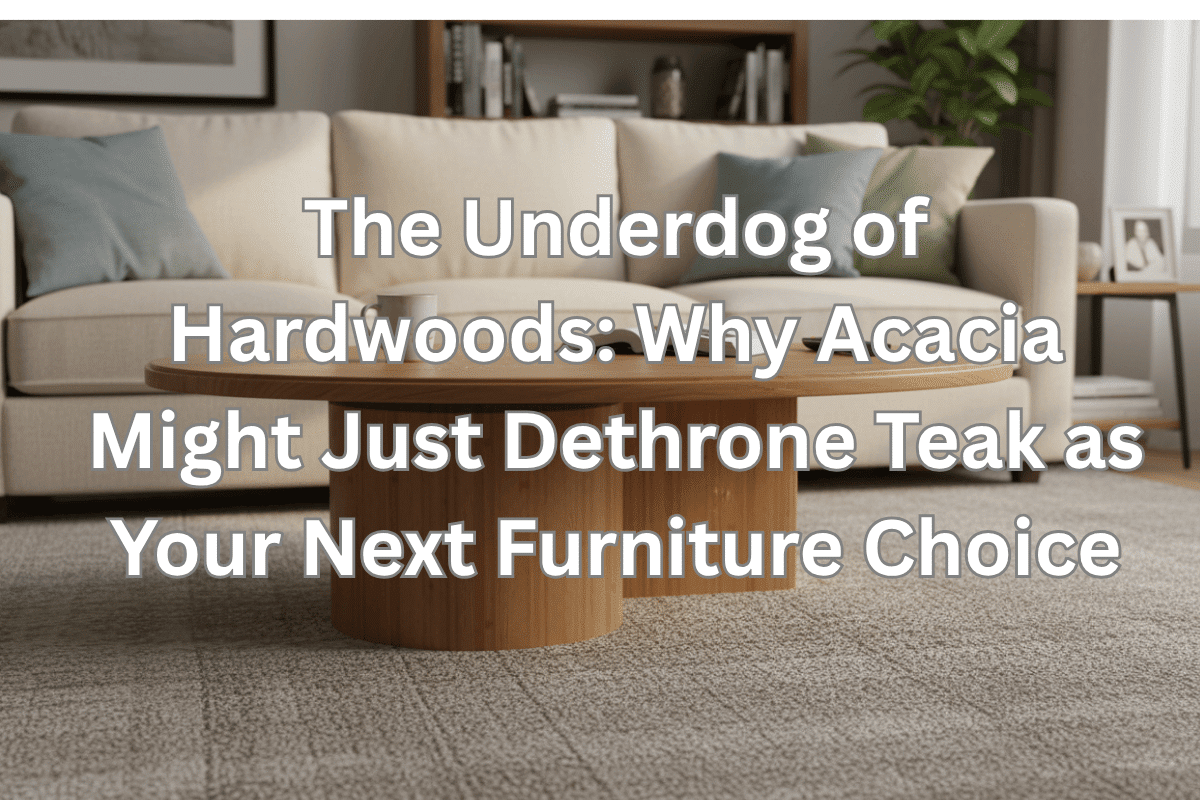For years, Teak has been crowned king of outdoor furniture, but is that really the full story?
What if the wood you’ve been consistently overlooking, Acacia, holds secrets that make it a compelling contender – or even a superior choice – for your next project? Prepare to challenge your assumptions as we expose the hidden advantages of Acacia and give you the definitive comparison you’ve been waiting for.
Table of Contents
- The Underdog of Hardwoods: Acacia’s Secret Strengths
- Teak’s Reign: Why It’s King (And Where It Falls Short)
- Head-to-Head: Acacia vs. Teak in Furniture Applications
- Beyond the Obvious: Uncovering Acacia’s Unique Advantages
- Making Your Choice: The Future of Sustainable Furniture
- Related Content
The Underdog of Hardwoods: Acacia’s Secret Strengths
Unveiling Acacia: Beyond the Surface
When most people think of premium hardwoods, their minds immediately jump to the usual suspects: oak, mahogany, or the ever-popular teak. But lurking in the shadows of the furniture world is a wood that’s been quietly building a reputation among those in the know – Acacia.
This remarkable hardwood offers something that many of its more famous counterparts simply cannot: incredible diversity in both appearance and application.
Acacia’s visual appeal lies in its stunning variety. Unlike woods that offer predictable, uniform patterns, Acacia presents a kaleidoscope of grain patterns that can range from straight and subtle to wild and dramatic.
The natural color palette is equally impressive, spanning from light golden honey tones that seem to glow with inner warmth to deep, rich reddish-brown hues that exude sophistication and depth.

This natural variation means that no two pieces of Acacia furniture are exactly alike, giving each piece a unique character that mass-produced alternatives simply cannot match.
But Acacia’s appeal goes far beyond its good looks. The wood’s cellular structure creates fascinating grain patterns that can include everything from gentle waves to bold, contrasting streaks.
Some pieces feature dramatic color transitions within a single board, creating natural artwork that would be impossible to replicate artificially. This inherent beauty means that Acacia furniture often requires minimal finishing to look spectacular, allowing the wood’s natural character to shine through.
Durability Deep Dive: The Strength Behind the Beauty
Here’s where Acacia begins to separate itself from the pretenders and prove it belongs in conversations with premium hardwoods.
With a Janka hardness rating that often exceeds 2,300 pounds-force, Acacia demonstrates exceptional resistance to scratches, dents, and everyday wear. To put this in perspective, this hardness level surpasses many popular furniture woods, including cherry, walnut, and even some oak varieties.
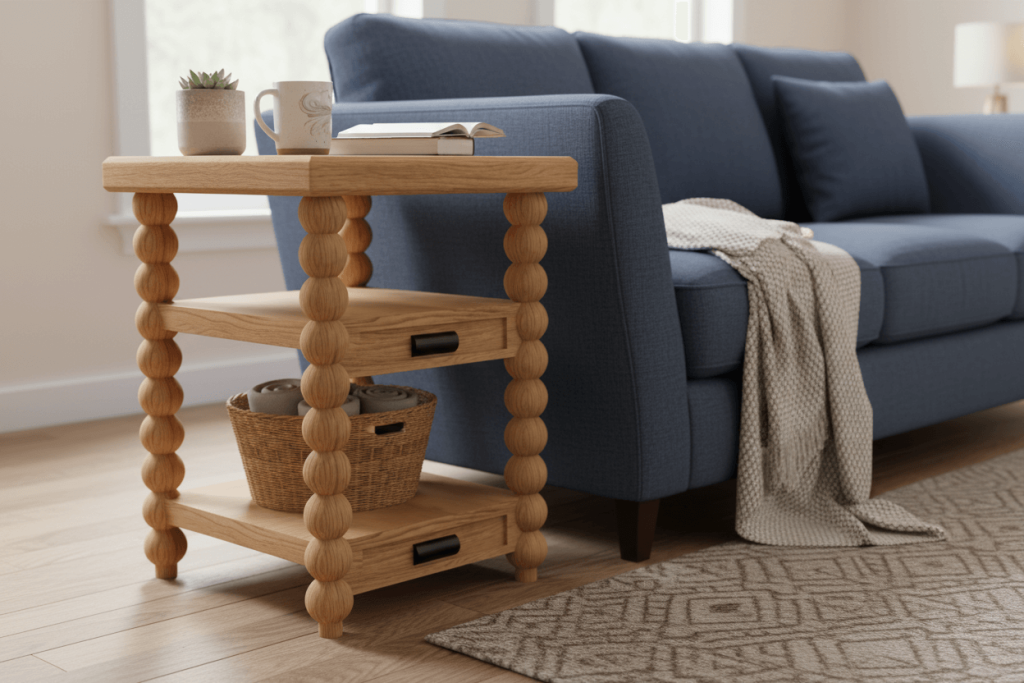
The high density of Acacia wood – typically ranging from 0.6 to 0.8 grams per cubic centimeter – contributes significantly to its durability. This density translates to furniture that can withstand the rigors of daily use without showing premature signs of wear.
Whether it’s a dining table enduring the constant placement and removal of dishes, or a coffee table bearing the weight of books, laptops, and the occasional feet, Acacia maintains its structural integrity and appearance over time.
What’s particularly impressive about Acacia’s durability is how it performs in real-world conditions. Unlike some hardwoods that can become brittle or prone to cracking as they age, Acacia tends to develop a beautiful patina while maintaining its structural strength.
The wood’s natural flexibility, combined with its hardness, creates a perfect balance that resists both impact damage and the gradual wear that comes from regular use.
The Sustainability Angle: Conscious Choice for Modern Times
In an era where environmental consciousness drives many purchasing decisions, Acacia emerges as a clear winner.
While traditional premium hardwoods like teak can take 40-60 years to reach maturity, Acacia trees grow at a remarkably rapid pace, often ready for harvest in just 10-15 years. This dramatic difference in growth cycles has profound implications for sustainability and environmental impact.
The widespread availability of Acacia across multiple continents – from Australia and Africa to Asia and South America – means reduced transportation costs and environmental impact compared to woods that must be sourced from specific, often remote regions.
Many Acacia plantations operate on sustainable forestry principles, with new trees planted to replace harvested ones, creating a renewable cycle that can continue indefinitely.
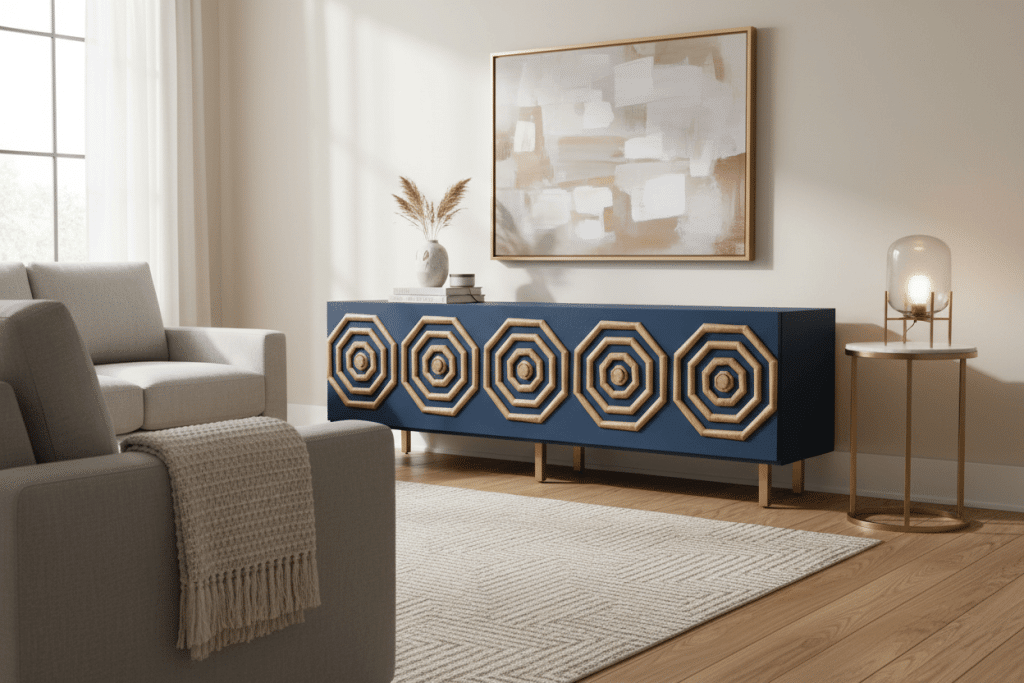
Furthermore, Acacia trees are remarkably adaptable, thriving in various climates and soil conditions where other hardwood species might struggle. This adaptability means that Acacia can be grown in areas that might otherwise be unsuitable for agriculture or other tree species, making efficient use of available land without competing with food production or displacing native ecosystems.
Teak’s Reign: Why It’s King (And Where It Falls Short)
Teak’s Legendary Status: The Gold Standard Explained
To understand why Acacia represents such a compelling alternative, we must first acknowledge why teak has held its throne for so long. Teak’s reputation isn’t built on marketing hype – it’s earned through decades of proven performance in the most demanding conditions imaginable.
The secret to teak’s legendary status lies in its unique chemical composition. Natural oils and silica deposits within the wood create an almost impenetrable barrier against moisture, insects, and decay.
These natural preservatives are so effective that teak can withstand decades of exposure to harsh marine environments without rotting, warping, or losing structural integrity. This is why you’ll find teak on luxury yachts, high-end outdoor furniture, and in applications where failure simply isn’t an option.
Teak’s natural oils also give it a distinctive feel and appearance that many consider the epitome of luxury. The wood’s natural golden-brown color deepens with age, developing a rich patina that many find irresistible. When properly maintained, teak furniture can last for generations, making it not just a purchase but an investment that can be passed down through families.
The Price of Perfection: Understanding Teak’s Premium
However, teak’s exceptional properties come with a significant cost – both financial and environmental. The slow growth rate of teak trees, combined with specific growing requirements and limited geographic distribution, creates a supply constraint that drives prices to premium levels.
High-quality teak can cost three to five times more than comparable hardwoods, putting it out of reach for many consumers.
The environmental cost is equally significant. Most commercial teak comes from plantations in Southeast Asia, requiring long-distance transportation that adds to its carbon footprint. The slow growth rate means that sustainable teak production requires long-term planning and patience – qualities that don’t always align with market demands for immediate supply.
Additionally, the high demand for teak has led to overharvesting in some regions, raising concerns about the sustainability of current consumption patterns. While plantation-grown teak is available, it often lacks some of the superior qualities of old-growth timber, creating a complex market where the best products are increasingly scarce and expensive.
When Teak Isn’t Optimal: Recognizing the Limitations
Despite its legendary status, teak isn’t perfect for every application. The wood’s natural oils, while excellent for weather resistance, can create challenges in finishing and bonding.
These oils can interfere with stain adhesion and may require special preparation techniques for painting or applying certain finishes.
Teak’s color palette, while beautiful, is relatively limited compared to more diverse woods like Acacia. The grain pattern, while elegant, tends toward uniformity that some find monotonous, especially in large furniture pieces or extensive installations.
For designers seeking dramatic visual impact or unique character, teak’s consistency can actually be a limitation rather than an asset.
The weight of teak can also be problematic in certain applications. While density contributes to durability, it also makes teak furniture significantly heavier than alternatives, potentially limiting its practicality for pieces that need to be moved regularly or in situations where weight is a concern.
Head-to-Head: Acacia vs. Teak in Furniture Applications
Aesthetic Showdown: Visual Appeal and Design Versatility
When it comes to visual impact, the comparison between Acacia and teak reveals two distinctly different philosophies of beauty. Teak represents classical elegance – refined, consistent, and timelessly sophisticated. Its uniform golden-brown color and straight grain patterns create furniture that exudes quiet luxury and fits seamlessly into traditional design schemes.
Acacia, by contrast, is the wild card – dynamic, unpredictable, and full of character. Its varied grain patterns and color variations make it the perfect choice for contemporary designs that celebrate natural imperfection and organic beauty. Where teak whispers sophistication, Acacia makes bold statements.
In modern minimalist settings, Acacia’s natural variations provide visual interest that prevents spaces from feeling sterile or cold. The wood’s ability to display everything from subtle honey tones to rich chocolate browns within a single piece creates natural focal points that eliminate the need for additional decorative elements.
For rustic or farmhouse designs, Acacia’s irregular grain patterns and natural edge characteristics make it ideal for live-edge tables, benches, and other pieces that celebrate the wood’s natural form. The wood’s tendency to develop interesting checking and character marks over time adds to its rustic appeal rather than detracting from it.
Performance Under Pressure: Real-World Durability Testing
In practical durability testing, both woods perform admirably, but in different ways. Teak’s legendary weather resistance makes it virtually unbeatable for outdoor applications, where its natural oils provide protection that synthetic treatments struggle to match. However, for indoor furniture, this advantage becomes less relevant, and other factors come into play.
Acacia’s superior hardness gives it an edge in resistance to everyday wear and tear. In side-by-side testing of dining tables, Acacia surfaces show less scratching from normal use, maintain their finish longer, and resist denting from dropped objects better than many traditional furniture woods, including some teak varieties.
Climate stability is another area where the comparison becomes interesting. While teak’s natural oils help it resist moisture-related movement, Acacia’s cellular structure and proper kiln-drying make it remarkably stable across various humidity levels. In controlled indoor environments, both woods perform excellently, but Acacia often does so at a fraction of the cost.
Impact resistance testing reveals Acacia’s surprising toughness. The wood’s combination of hardness and flexibility allows it to absorb impacts that might crack or chip more brittle hardwoods. This makes it particularly suitable for furniture that sees heavy use, such as dining tables, desks, and children’s furniture.
Maintenance Matters: Practical Care Considerations
One of Acacia’s most compelling advantages lies in its maintenance requirements – or rather, the lack thereof. Unlike teak, which benefits from regular oiling to maintain its appearance and weather resistance, Acacia furniture typically requires only basic cleaning and occasional polishing to look its best.
For indoor applications, Acacia’s natural durability means that protective finishes last longer and require less frequent renewal. The wood’s stable nature reduces the likelihood of finish cracking or peeling, while its hardness resists the wear that typically necessitates refinishing.
Teak’s maintenance requirements, while not excessive, are more specific and potentially costly. The natural oils that give teak its weather resistance can also make refinishing more complex, often requiring special preparation and compatible products. For outdoor teak furniture, regular cleaning and periodic oiling are essential to maintain both appearance and performance.
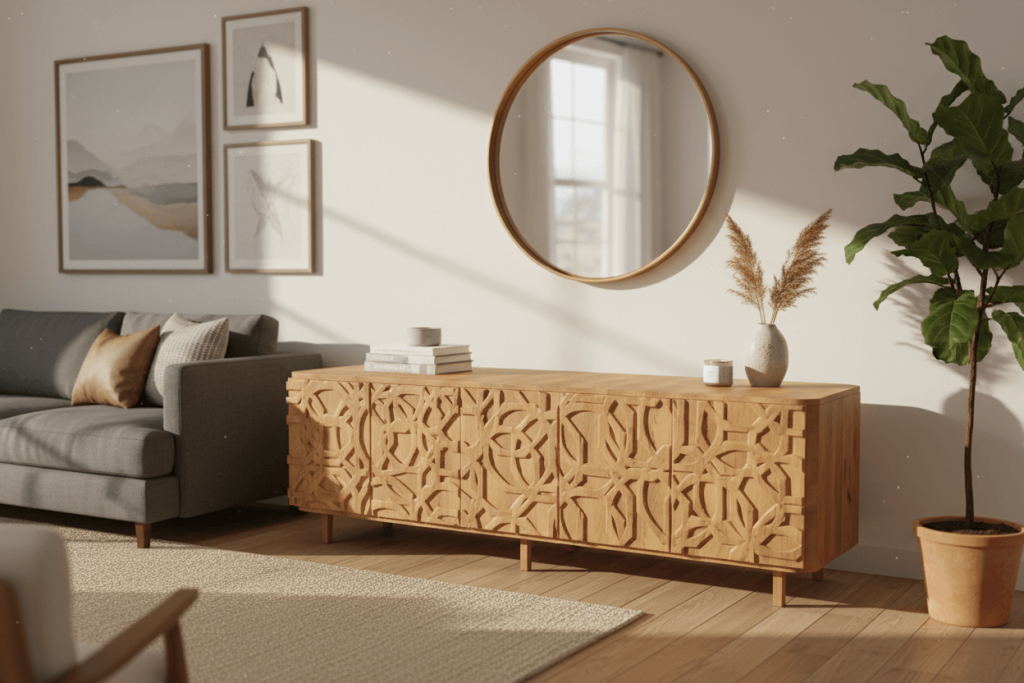
Beyond the Obvious: Uncovering Acacia’s Unique Advantages
The Value Proposition: Premium Quality at Accessible Prices
Perhaps Acacia’s most compelling advantage is its exceptional value proposition. The wood delivers hardwood aesthetics and performance that rival much more expensive alternatives, but at prices that make premium furniture accessible to a broader market. This democratization of quality furniture represents a significant shift in the industry, where beautiful, durable pieces no longer require luxury-level budgets.
The cost savings aren’t just about the initial purchase price. Acacia’s durability and low maintenance requirements translate to lower lifetime costs compared to softer woods that might require more frequent refinishing or replacement. When factoring in the total cost of ownership, Acacia often represents the most economical choice for quality hardwood furniture.
For furniture makers and designers, Acacia’s affordability opens up new possibilities for experimentation and customization. The lower material costs allow for more elaborate designs, thicker construction, and premium hardware that might be cost-prohibitive with more expensive woods.
Design Versatility: Where Acacia Truly Shines
Acacia’s natural characteristics make it exceptionally versatile across design styles. In contemporary settings, its clean lines and varied grain patterns complement modern aesthetics while adding warmth and natural texture. The wood’s ability to take both natural and colored finishes means it can adapt to virtually any color scheme or design concept.
For industrial-style furniture, Acacia’s natural strength allows for bold, minimalist designs that showcase the wood’s inherent beauty without requiring excessive support structures. Live-edge Acacia slabs make stunning conference tables, kitchen islands, and artistic furniture pieces that serve as functional sculpture.
In traditional settings, Acacia’s rich colors and interesting grain patterns provide visual interest while maintaining the warmth and sophistication expected in classic furniture designs. The wood’s ability to develop a beautiful patina over time ensures that Acacia furniture becomes more beautiful with age, much like traditional hardwood pieces.
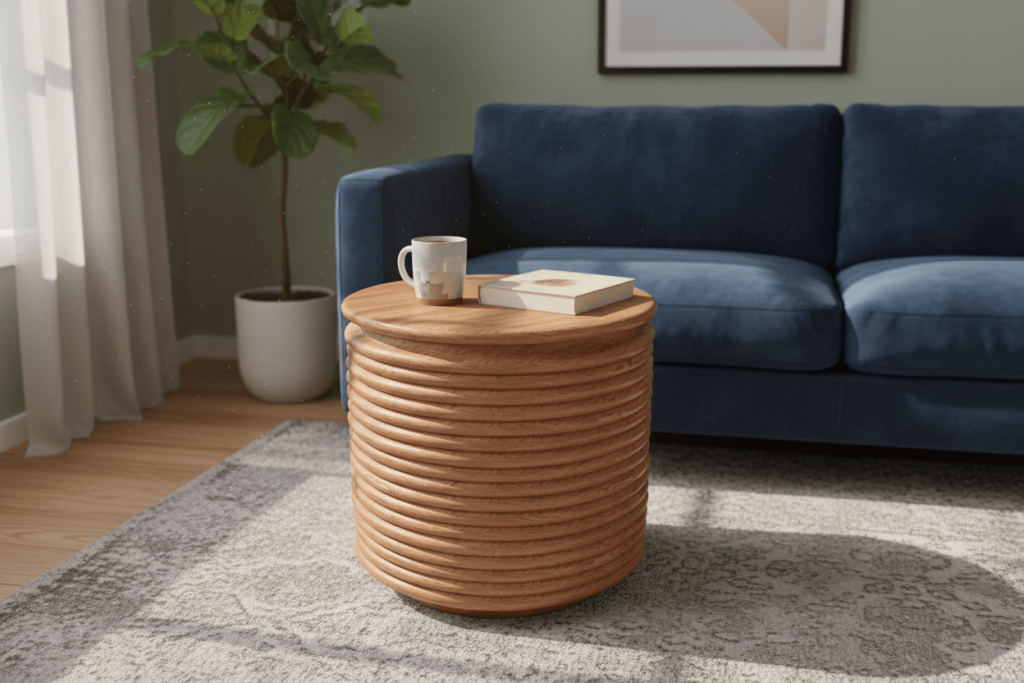
The “Hidden Gem” Factor: Industry Recognition and Growing Popularity
Professional designers and furniture makers are increasingly recognizing Acacia’s potential, leading to its growing presence in high-end furniture showrooms and custom workshops. This professional endorsement is driving broader consumer awareness and acceptance, positioning Acacia as a legitimate alternative to traditional premium hardwoods.
The wood’s photogenic qualities make it particularly popular in an era where furniture is often showcased on social media. Acacia’s natural variations and rich colors photograph beautifully, making it a favorite among furniture makers who rely on visual marketing to showcase their work.
Sustainability-conscious consumers are also driving demand for Acacia as awareness grows about the environmental benefits of choosing rapidly renewable hardwoods over slow-growing alternatives. This trend aligns with broader movements toward sustainable consumption and environmental responsibility.
Making Your Choice: The Future of Sustainable Furniture
Informed Decision Making: Key Considerations
Choosing between Acacia and teak ultimately depends on your specific needs, preferences, and values. For outdoor applications where weather resistance is paramount, teak’s natural advantages may justify its premium price. However, for indoor furniture where durability, beauty, and value are the primary concerns, Acacia presents a compelling case.
Budget considerations often make the decision straightforward. Acacia allows you to achieve the look and performance of premium hardwood furniture without the premium price tag. This budget efficiency can be redirected toward better hardware, superior construction techniques, or simply allow for larger or more pieces within the same budget.
Environmental impact is another crucial factor. If sustainability is important to your purchasing decisions, Acacia’s rapid growth rate and widespread availability make it a more environmentally responsible choice than slow-growing alternatives that may be harvested from old-growth forests.
Dispelling Misconceptions: Redefining Value in Furniture
The furniture industry has long perpetuated the myth that price equals quality, leading consumers to believe that more expensive automatically means better. Acacia challenges this assumption by delivering exceptional quality at accessible prices, proving that “overlooked” doesn’t mean “inferior.”
This shift in thinking represents a broader evolution in consumer values, where informed buyers are looking beyond traditional status symbols to find products that offer genuine value, sustainability, and unique character. Acacia perfectly embodies these new priorities, offering a wood that performs exceptionally while aligning with contemporary values.
The Evolving Landscape: Acacia’s Rising Star
As we look toward 2025 and beyond, several trends suggest that Acacia’s popularity will continue to grow. Increasing environmental awareness, rising costs of traditional premium hardwoods, and growing appreciation for unique, characterful furniture all favor Acacia’s continued rise.
The wood’s versatility and performance characteristics position it perfectly for the evolving furniture market, where consumers seek pieces that are both beautiful and responsible. As more designers and manufacturers discover Acacia’s potential, we can expect to see increasingly sophisticated and innovative applications that showcase the wood’s unique properties.
The future of furniture lies not in maintaining traditional hierarchies based on scarcity and price, but in recognizing and celebrating woods that offer genuine value, sustainability, and beauty. Acacia represents this future – a wood that doesn’t ask you to compromise on quality, aesthetics, or environmental responsibility.
While teak will likely maintain its position in specific applications where its unique properties are essential, Acacia is poised to capture a significant share of the premium furniture market by offering everything most consumers actually need in a hardwood: beauty, durability, sustainability, and value.
The question isn’t whether Acacia will continue to grow in popularity, but how quickly the rest of the world will recognize what forward-thinking designers and consumers already know – that sometimes the best choice isn’t the most obvious one.
If you are interested in seeing how Mondoro can help you with your acacia and teak wood, and other home decor products – we would love to talk to you about how we can help you.
Find out more about how Mondoro can help you create, develop, and manufacture excellent home decor and furniture products – don’t hesitate to contact me, Anita. Check out my email by clicking here or become a part of our community and join our newsletter by clicking here.
Mondoro gives out a FREE Lookbook to anyone interested. You can receive a copy of our latest Lookbook by clicking here.
Listen to our Podcast called Global Trade Gal. You can find it on all major podcast platforms. Try out to listen to one of our podcasts by clicking here.
Subscribe to our Mondoro Company Limited YouTube Channel filled with great videos and information by clicking here.
Related Content
Recycled Pine Furniture, What You Need to Know
Reclaimed and recycled wood may seem to be the same thing, but they are not exactly the same. Recycled wood is wood that would have otherwise been discarded or not used. Wood is a naturally sustainable material as it can be regrown and replaced. There are a variety of furniture shapes and styles that can be used to make recycled pine furniture.
You can discover more by reading Recycled Pine Furniture, What You Need to Know by clicking here.
How Do I Find an Overseas Manufacturer To Produce My Product Ideas?
Though it is not easy to find reliable overseas manufacturers, you can take some basic steps to find a dependable supplier. This process to locate this dependable manufacturer can include things such as finding a buying agent, attending trade shows, doing some online searches, talking to some trade organization, and getting a referral from someone from the industry.
You can read our blog on How Do I Find an Overseas Manufacturer to Produce my Product Ideas? by clicking here.
What Does “FSC Certified” Wood Mean?
FSC means the Forrest Stewardship Council, a nonprofit certification process to ensure that wood used for products is from a managed forest and source. The goal of the FSC is to stop illegal logging activities and certify that wood used for a product has reached the standard to be called FSC-certified wood.
You can learn more by reading our blog, What Does “FSC Certified” Wood Mean? by clicking here.

